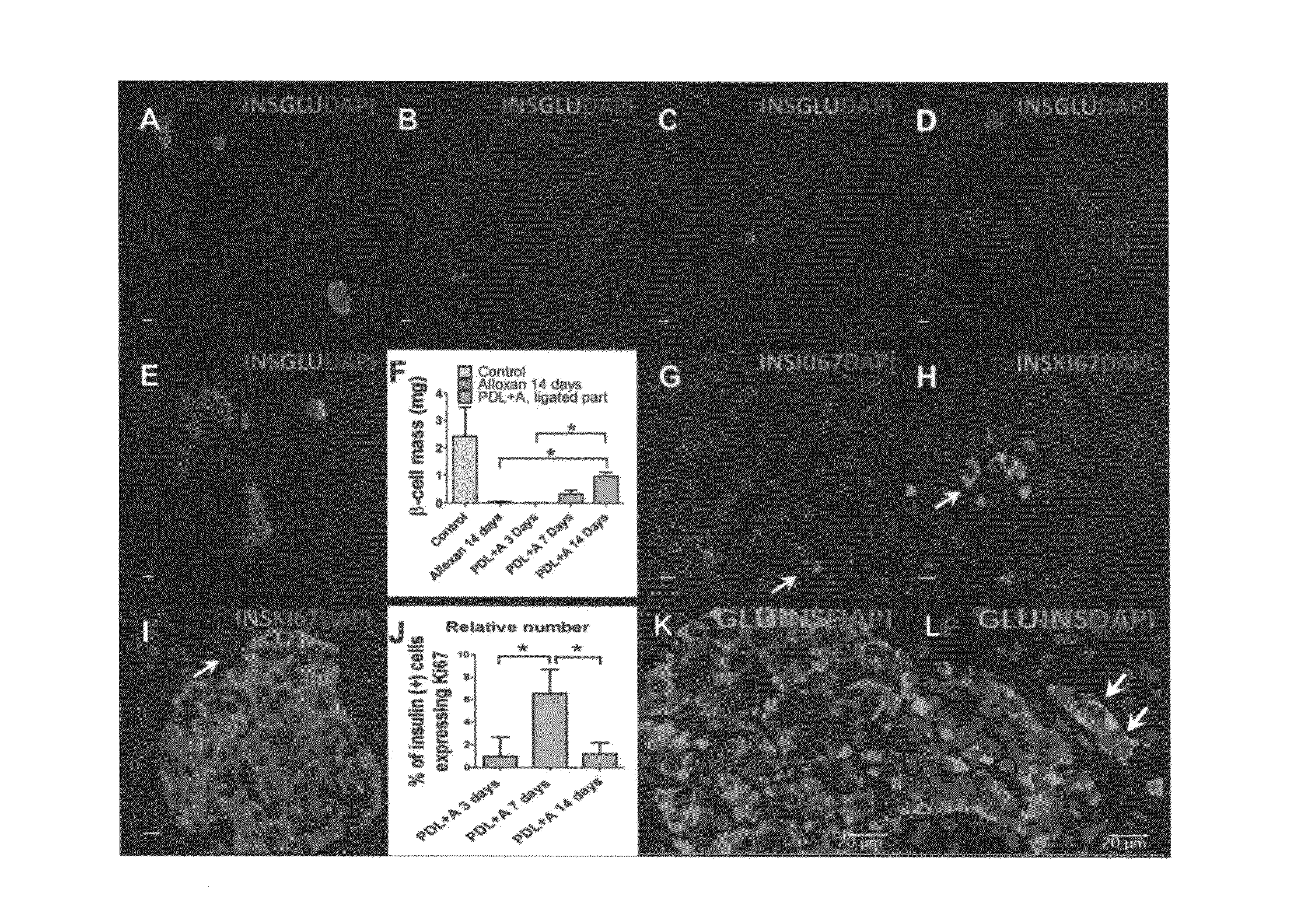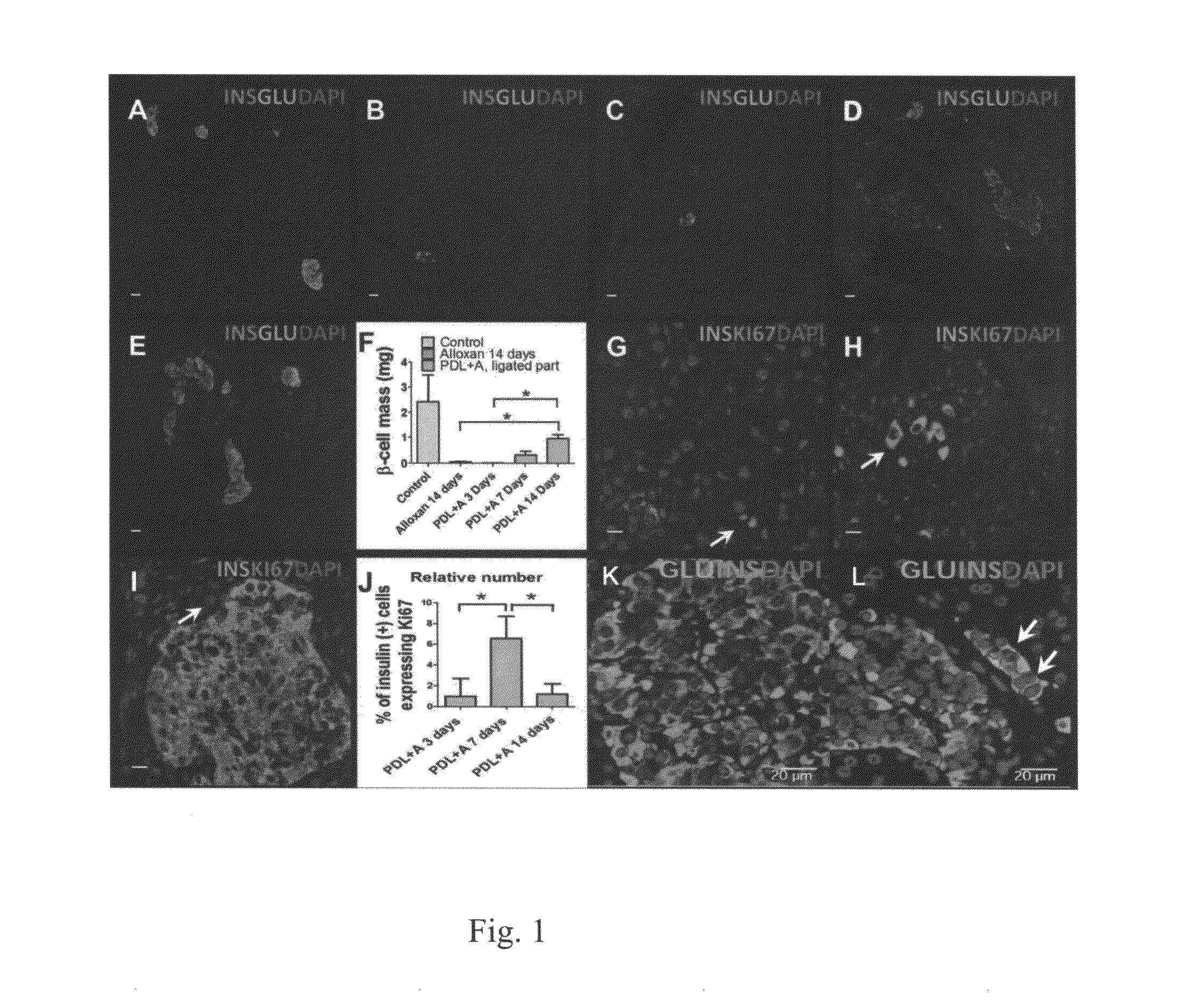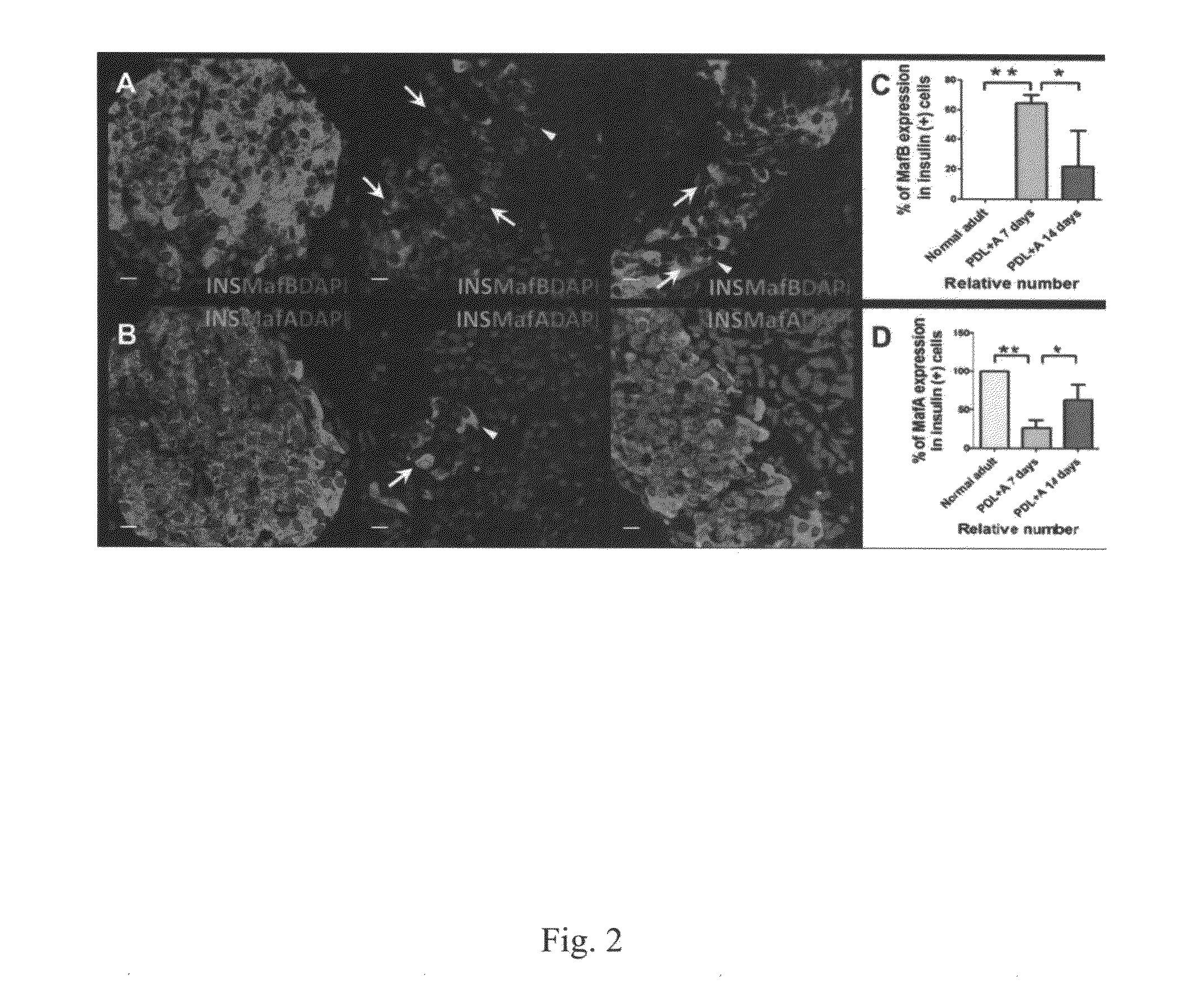Methods of Pancreatic Beta Cell Regeneration
a pancreatic beta cell and cell technology, applied in the field of cell regeneration, can solve the problems of many approaches to -cell regeneration that have failed, diabetes is a serious disease with and is an enormous burden on health care systems and economies throughout the world, and achieves the effect of high prevalence rate and serious complications
- Summary
- Abstract
- Description
- Claims
- Application Information
AI Technical Summary
Benefits of technology
Problems solved by technology
Method used
Image
Examples
embodiment 1
nesis Following PDL Plus Alloxan is Rapid and Robust
[0047]To determine the extent to which β-cell mass in adults can be regenerated by neogenesis, as opposed to replication, we combined PDL with elimination of pre-existing β-cells using the β-cell toxin alloxan. Following PDL plus alloxan, greater than 99% of β-cells were eliminated (compare FIG. 1A with FIG. 1B, quantitated in FIG. 1F), leaving residual clusters of α-cells marking the location of pre-existing islets (FIG. 1B). Two weeks later, there was no evidence of β-cell regeneration with alloxan treatment alone (FIG. 1C, FIG. 16D, quantitated in FIG. 1F). PDL alone resulted in the appearance of insulin- and glucagon positive cells within the hyperplastic ducts that are present in that model, but such cells were uncommon (FIG. 3B, 3D). PDL plus alloxan resulted in a dramatically different regenerative response than alloxan alone. Two weeks following PDL plus alloxan, large islets were found in the ligated but not unligated part...
embodiment 2
he PDL Plus Alloxan Model are Newly Formed and Do Not Arise by Replication of Pre-Existing β-Cells
[0049]The β-cells that appeared at 2 weeks following PDL plus alloxan must have arisen either by replication of pre-existing β-cells that were not eliminated by alloxan or by neogenesis from a precursor. Given that almost all pre-existing β-cells were eliminated by alloxan, residual β-cells (less than 1% of pre-existing β-cells, FIG. 1) could account for regeneration only if there was highly efficient and rapid replication of the rare remaining β-cells. To address this possibility, we determined the frequency of β-cell replication at different times following PDL plus alloxan. By Ki67 immunohistochemistry, the frequency of replicating insulin-positive cells 3 days following alloxan plus PDL was very low (0.98%; FIG. 1G, quantified in FIG. 1J). It increased transiently to 6% by day 7 (FIG. 1H), but had decreased to basal levels by day 14 (FIG. 1I, quantified in FIG. 1J). Given the low le...
embodiment 3
ells do not Arise Predominantly From Progenitors in the Duct
[0051]Having ruled out replication of pre-existing β-cells as a source of the regenerating β-cells following PDL plus alloxan, we concluded that the vast majority of insulin-positive cells must have arisen by neogenesis from a progenitor. Although substantial controversy exists, a number of studies have reported that duct epithelial cells can function as endocrine progenitors in the PDL model. Thus, it was important to examine the possibility that duct cells were the source of the neogenic β-cells following PDL plus alloxan. Given the tremendous increase in the number of β-cells that occurred following PDL plus alloxan compared with PDL alone, where none of the pre-existing β-cells were eliminated, the frequency of insulin-positive cells within ducts would have to be much higher in PDL plus alloxan compared with PDL alone if duct cells were the source of the neogenic β-cells. Thus, we examined the occurrence of insulin-posi...
PUM
| Property | Measurement | Unit |
|---|---|---|
| weight | aaaaa | aaaaa |
| thickness | aaaaa | aaaaa |
| insulin resistance | aaaaa | aaaaa |
Abstract
Description
Claims
Application Information
 Login to View More
Login to View More - R&D
- Intellectual Property
- Life Sciences
- Materials
- Tech Scout
- Unparalleled Data Quality
- Higher Quality Content
- 60% Fewer Hallucinations
Browse by: Latest US Patents, China's latest patents, Technical Efficacy Thesaurus, Application Domain, Technology Topic, Popular Technical Reports.
© 2025 PatSnap. All rights reserved.Legal|Privacy policy|Modern Slavery Act Transparency Statement|Sitemap|About US| Contact US: help@patsnap.com



